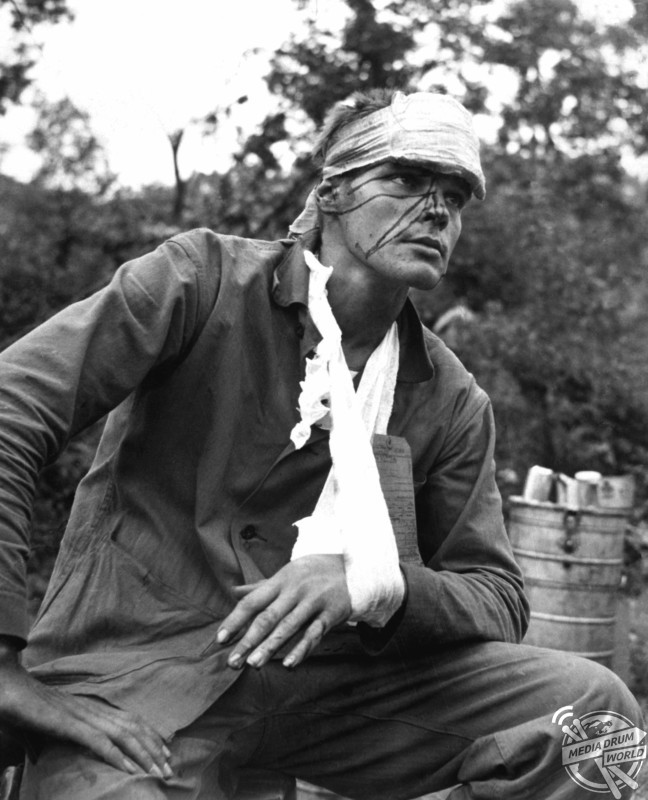
By Mark McConville
ACTION-PACKED pictures showing American GIs in the Korean War have been released to mark the 57th anniversary of US troops first engaging North Korean troops in combat.

Striking images show a US Marine tank follow a line of prisoners of war down a village street, American soldiers engaging with the enemy and a grief stricken American infantryman whose buddy has been killed in action being comforted by another soldier.
Other light-hearted photographs show the iconic Marilyn Monroe appearing at the USO Camp Show, troops being fed by Mickey Rooney and others show members at the same event and General Douglas MacArthur embracing Dr Syngman Rhee, Korea’s first President.

The Battle of Osan was the first engagement between United States and North Korean forces during the Korean War, on July 5, 1950.
Task Force Smith, a U.S. task force of 400 infantry supported by an artillery battery, was moved to Osan, south of the South Korean capital Seoul, and ordered to fight as a rearguard to delay advancing North Korean forces while additional U.S. troops arrived in the country to form a stronger defensive line to the south.
The task force lacked both anti-tank guns and effective infantry anti-tank weapons, having been equipped with obsolescent 2.36-in. rocket launchers and a few 57 mm recoilless rifles.

Aside from a limited number of HEAT shells for the unit’s 105-mm howitzers, crew-served weapons capable of defeating the T-34 Soviet tank had not been distributed to U.S. Army forces in Korea.
A North Korean tank column equipped with ex-Soviet T-34/85 tanks overran the task force in the first encounter and continued its advance south.
After the North Korean tank column had breached U.S. lines the Task Force opened fire on a force of some 5,000 North Korean infantry approaching its position, temporarily holding up the North Korean advance.

North Korean troops eventually flanked and overwhelmed American positions and the remnants of the Task Force retreated in disorder.
The pictures of war-torn Korea act as a reminder and a warning as to what could happen should the current strike between North Korea and America escalate.
The Korean War began on 25th June 1950 when North Korea invaded South Korea. This prompted the United Nations, with USA as the principal force, to come to South Korea’s aid. North Korea were aided by China while the USSR gave some assistance.

Korea had been split into two regions with separate governments in 1948 as a product of the Cold War between the Soviet Union and the United States who operated in North Korea and South Korea respectively.
The war became one of attrition and the frontline was close to the 38th parallel, the dividing line between the two countries.
An armistice was signed on 27th July 1953 and fighting came to an end. The agreement created the Korea Demilitarised zone to separate the two countries and allowed the return of prisoners.
As no peace treaty has been signed North and South Korea are still technically at war.







